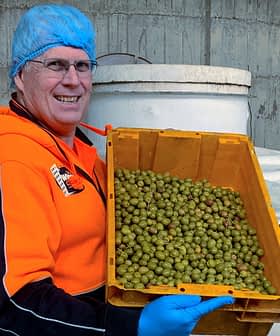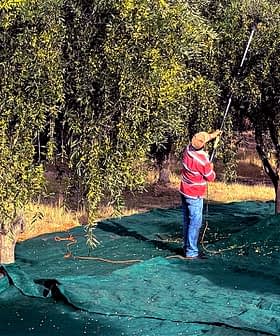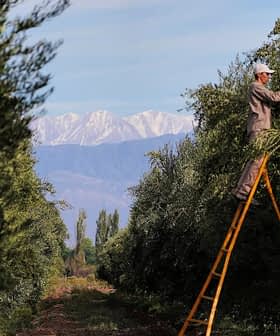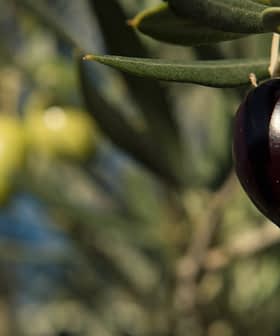Farmers in Australia Look Forward to An Abundant Harvest
Producers cited climatic challenges, supply chain issues and disease as potential challenges but remain optimistic for a bumper harvest.
 Harvest at Hunter's Dream Estate in Hillston, New South Wales
Harvest at Hunter's Dream Estate in Hillston, New South Wales Australian farmers are beginning their harvest, with expectations of better results than in 2022 despite potential challenges such as climatic issues and supply chain disruptions. Producers across the country, including those in Western Australia, New South Wales, South Australia, and Victoria, are anticipating a larger harvest this year and are optimistic about the quality of the crop, with the high international cost of olive oil making 2023 an attractive year for Australian olive farmers.
Australian farmers have started harvesting, and although some challenges are on the horizon, many look forward to better results than in 2022.
Some producers have listed climatic challenges, supply chain issues and disease as concerns that could possibly influence the results of this year’s harvest.
With the very high international cost of olive oil… it means that 2023 is a very attractive year for Australian olive farmers.
Michael Southan, the Australian Olive Association (AOA) chief executive, told Olive Oil Times that olive harvesting has started, but not on a large scale yet.
“Generally, harvesting will start about two weeks later than usual due to the cool temperatures through spring and early summer,” Southan said, “so harvesting will start in earnest after Easter [April 9th].”
See Also:2023 Harvest News“The Western Australian and New South Wales harvests are expected to start around mid-April,” added Jan Jacklin, the Australian Olive Oil Association (AOOA) general manager. “The South Australian harvest is expected to start around mid-May, and the Victorian harvest will likely start around late April or early May.”
“Generally, the further north and the warmer the conditions, the earlier the harvest starts in Australia,” she said.
According to Jacklin, producers have experienced dry autumn weather, allowing for a controlled ripening period.
She said they received feedback from producers that fungal pressure and humidity were low, which is good news from a quality perspective.
Southan said Australian farmers anticipate a larger harvest this year than last year, when many producers reported entering an ‘off-year’ in the natural alternate bearing cycle of the olive tree, with a potential record or near-record crop in the making.
“Labor from backpackers appears plentiful this year for those who will be hand-picking,” Southan said.
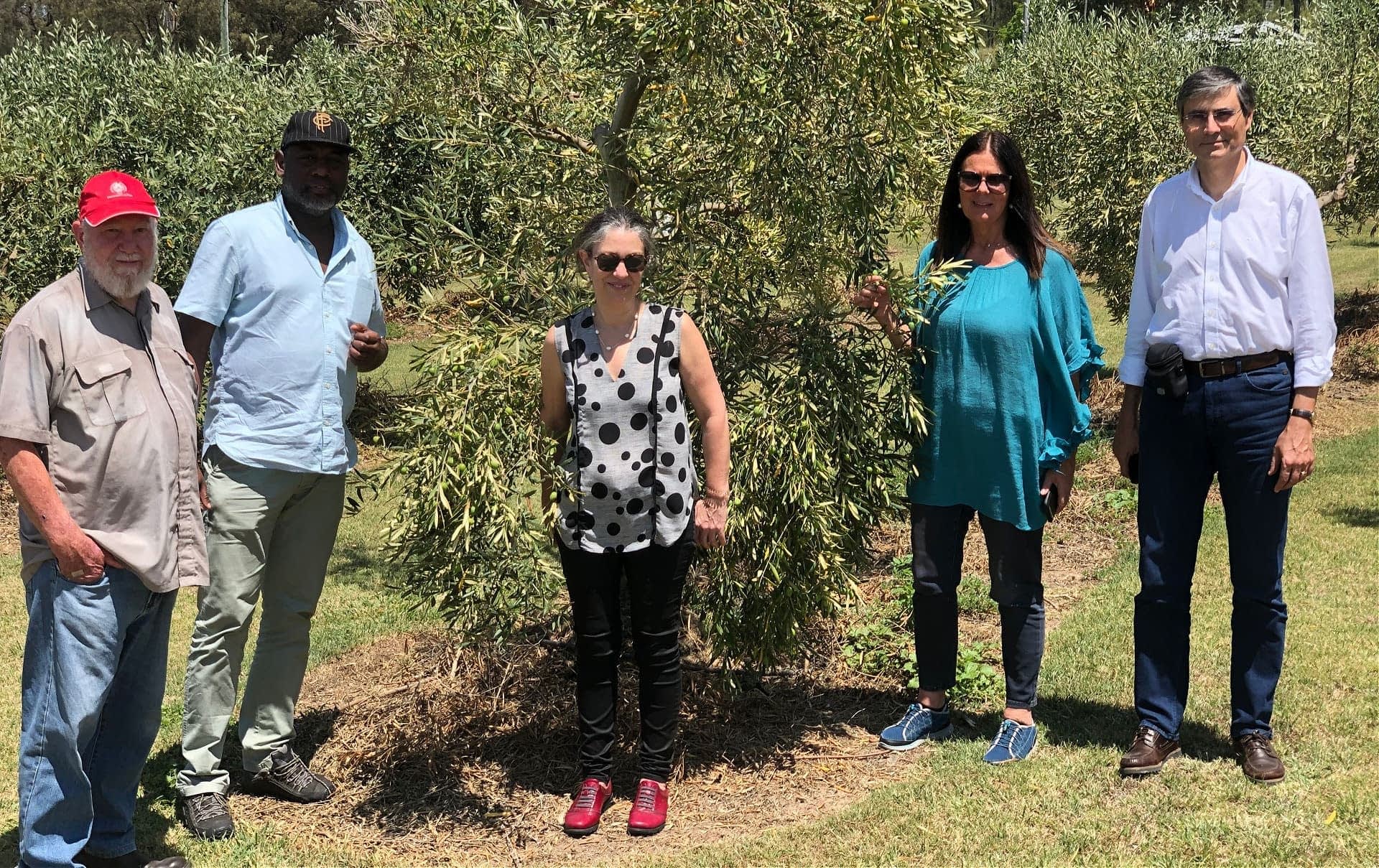
Professor Robert Spooner-Hart (red cap) with researchers from Portugal in the Hunter Valley earlier this year
“All crops are looking good at this stage and should be better than last year,” added David Valmorbida, AOOA president. “And the biennial nature of olives implies a bigger harvest this year.”
“Overall, we’re expecting a positive year with a decent harvest,” he told Olive Oil Times. “With the very high international cost of olive oil due to the shortages caused by Europe’s drought and Spain’s very small recent harvest, it means that 2023 is a very attractive year for Australian olive farmers.”
However, Valmorbida remains cautiously optimistic. “Unexpected inclement weather could still impact the final yield,” he said. “The weather, as always, is the biggest challenge for producers.”
“The main challenges will be sourcing consumables such as packaging,” Southan added, due to supply chain issues in Australia, which are improving but remain a possible problem. “And in some areas, getting contract harvesters when required [could be a challenge],” he said.
Meanwhile, Sui Tham, co-owner of Cape Schanck Olive Estate on the country’s southern Mornington Peninsula in Victoria, told Olive Oil Times they are preparing to start the harvest in mid-April.
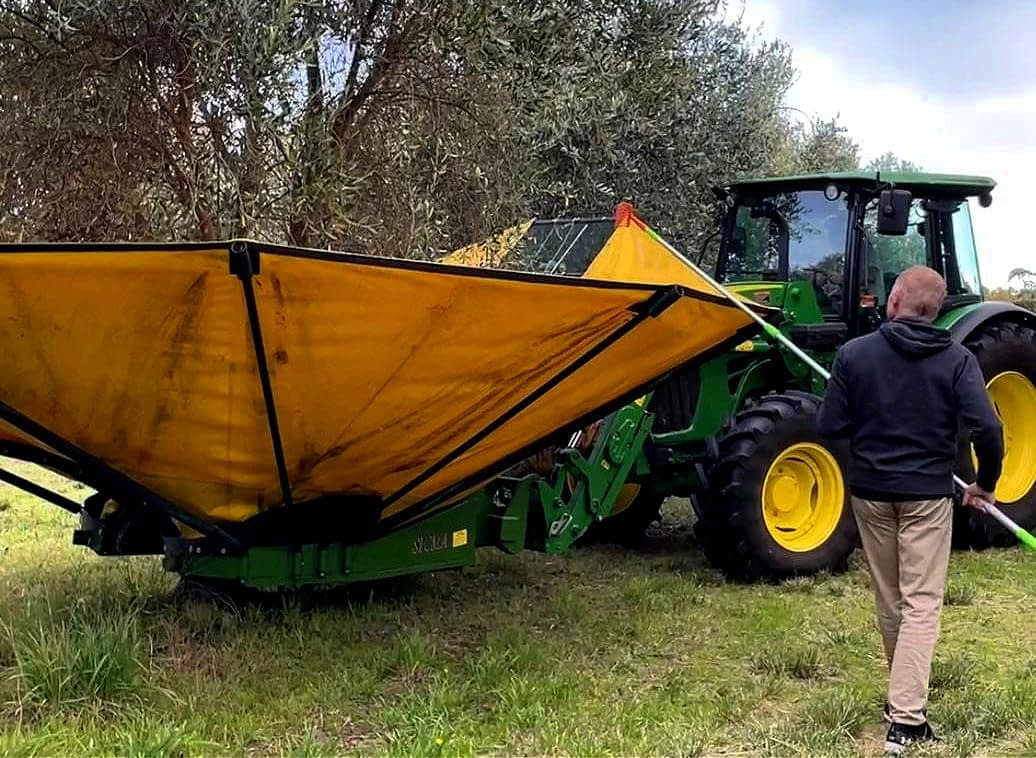
Cape Schanck Olive Estate
Tham, who co-owns the estate with her husband, Stephen, said being on the southernmost tip of Australia with temperatures generally 3 ºC to 5 ºC cooler than the rest of Victoria means they usually harvest three to four weeks later.
However, she said the weather has been on their side thus far. “There was a period of heavy rain during the flowering period, then [it was] dry during the fruit set,” Tham said. “The weather has not been excessively hot, with periods of relatively good rainfall after a dry spell of one to two weeks.”
Cape Schanck is preparing for a bountiful harvest this time around. “Looks like the quantity is at least twice as good as the previous year,” Tham said. “More importantly, the fruit look really healthy, and we are hoping that translates to quality oil.”
“Irrespective of the amount of fruit we harvest, the x‑factor each year is how the quality turns out,” she added. “The consumers are now increasingly better educated, their palate increasingly sophisticated, and the expectations increasingly higher.”
“Our challenge is to be able to meet these demands and also the palate of the judges at the NYIOOC World Olive Oil Competition,” Tham continued.
The Cape Schanck team expects the weather to remain on their side. “It looks like La Niña influence on the weather here is waning, especially over the last two to three months, and the Bureau of Meteorology is predicting a neutral outlook.”
Another producer on the Mornington Peninsula, Taralinga Estate, told Olive Oil Times they expect to harvest at the beginning of May.
“We are hoping this year’s crop will be bigger and better, and we will get a larger quantity of oil,” said Christina Hack, the estate’s sales and marketing manager.
“[There are] no real foreseeable challenges, but we are hoping the oil produces a high polyphenol count and a great oil for future gold medals,” she added.
Also from Victoria, Australia’s largest olive oil producer Cobram Estate – formerly Boundary Bend – is due to start harvesting in late April.
Sam Beaton, the co-chief executive of Cobram Estate, told Olive Oil Times this had been a higher-yielding crop year due to the biennial bearing cycle.
“Based on our crop assessments, we expect our Australian olive oil production in 2023 to be significantly higher than in 2022,” he said, adding that he didn’t foresee any challenges at this stage. “Normal harvest conditions [are] expected.”
Further north, Hunter’s Dream Estate in New South Wales was also preparing to harvest.
“Apart from our contingency plans to respond to factors like the weather, which is outside our control, the biggest challenge this year is managing increased operational costs and sourcing skilled workers,” business manager Nini Cheong said.
Another producer, John Symington, who owns Oasis Olives, owns a few olive farms across Australia and expressed concern about fungal issues.
“We are keeping a very close eye on varieties that are susceptible to anthracnose [a group of fungal diseases],” he said. “The very wet conditions at flowering may mean that there will be more of a challenge from anthracnose than usual.”
“We plan to harvest these varieties early to minimize the issue,” he added.
Share this article



